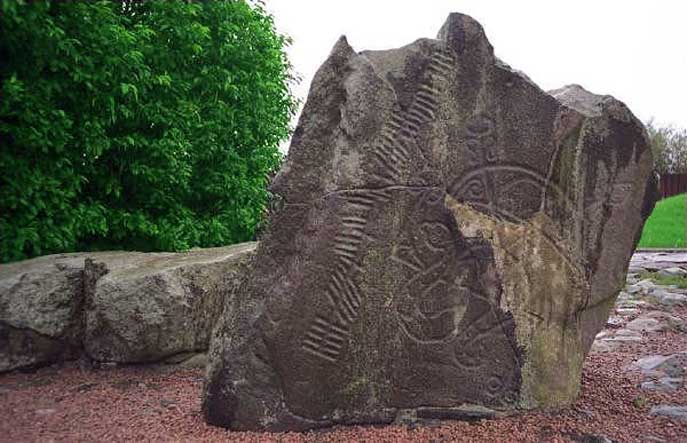THE SOURCES USED AND THE FATE OF OTHERS |
|||
|
Almost all that we have of our own ancient history has come to us from the hands of Irish clerics who spent so much of their lives recording all that was going on around them. We have so much for which to thank those Irish scribes. Were it not for them we should know practically nothing about the Picts and Scotland’s past, and we would all have been so much the poorer for it. The King List is chronological in only the broadest sense. Many of the reigns overlapped one another as two kings often ruled Pictland at the same time, with lengths of reign differing for each king. Due to civil wars among the Picts and constantly changing leadership at these times, the situation was made even more difficult for the scribes who were compiling the lists. Another problem lies in the multitude of differing spellings for each king’s name. Each scribe had his own subjective opinion as to how the names should be transcribed and consequently names can vary considerably from one manuscript to another. Which of these names, for example, is the correct form of spelling for the king who was the ‘son of Irb’ ? (no.26). Is it Necton, Nechton, Necthon, Nectan, Nechtan, Nathad, Netthad, Netthan, Nectane, Nethan or Naiton? That is eleven different spellings for just one name. (Who would be a linguist?) Due to this profusion of assorted spellings the author of this work has therefore been subjective himself, and has chosen those forms which he personally believes reflect most accurately the correct Pictish name for each king. Doubtless there will be those who disagree with his choice, and that of course is their prerogative. He does not claim that his selection is necessarily the correct one. Several academic works give the various alternative spellings for the names of the Pictish Kings, and there have been assorted attempts (some rather spurious it must be said) at translating them. The bibliography at the end of this book gives a fairly broad selection of those titles currently available that cover this subject and others related. Following the King List, after a short discussion on the phenomenon known as ‘matrilinear succession’, will be found such biographical information as is available on the kings, given in an easy to read format. This information will follow the same sequential form as that of the King List, with numbers added to assist readers in their study. Charlemagne, King of the Franks (742-814 A.D.) and a great patron of the arts, is recorded as having said, “To possess another language is to possess another soul.” With that sage advice in mind therefore, several selected pieces of script from the ancient chronicles have been given in the original Old Irish and Latin, in which languages they were written. It is hoped that by having done so, readers might be accorded the opportunity of immersing themselves further into the Dark Age, or Early Medieval period which this book covers. It can be all too easy to underestimate the difficult and painstaking work that was carried out by those early scribes. They did not have our modern comforts of electric light with central heating in their homes, and knew nothing of computers and word processors. They were forced by their limiting circumstances to work by the light of a guttering candle and use their own home made ink and parchment, i.e. the skin of a sheep or goat, as their writing medium. Yet, in spite of these hardships, they were often able to compose some of the most beautiful pieces of poetry and prose to be found anywhere, written not only in their own native tongue, but also in Latin and often in Greek. It practically beggars belief that they were able to accomplish what they did. All such pieces have been translated into English. Hopefully not too much of the beauty of these old languages has been lost in doing so. |
 |
REX PICTORUM |
Back to Top
Return to Paisley T. A. website
© Ron Henderson 2008-09

